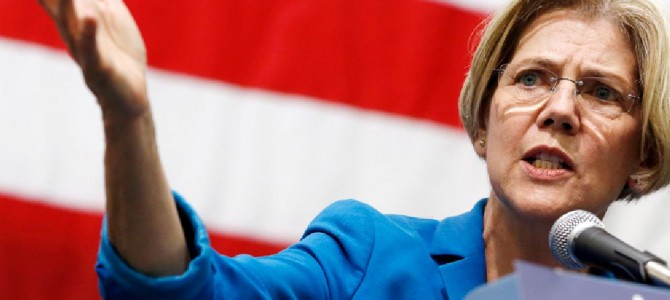
As the midterm elections approach, Democrats are planning to campaign against the GOP’s deeply unpopular Obamacare repeal efforts to win over young voters. Democrats rightly see healthcare as a winning issue among millennials, and “Medicare for All” polls particularly well with young people. Conservatives have developed a strong case against socialized healthcare, citing its $32 trillion price tag that would necessitate unheard-of tax hikes, but they lack their own platform to address the high healthcare costs driving young Americans to support Medicare for All.
My peers do not support single-payer healthcare because of any set-in-stone ideological commitment, but because it addresses their concerns about the high cost of healthcare. In order to attract new young converts, conservatives need a better response to single-payer healthcare than arguments about its fiscal infeasibility or ideological debates about whether there is a “right to healthcare.” Instead, conservatives need a market-based agenda that lowers healthcare costs and prices, making care more affordable for everyone, without putting it all on the government’s tab.
One reason healthcare costs have skyrocketed lies in the high barriers to entry into the medical profession, limiting the number of doctors in the country. For example, it takes 14 years to become a doctor in the U.S., compared to a global average of 10 years. Under the current system, with four years of medical school and four years of undergraduate education, some aspects of the medical curriculum are repeated multiple times. This leaves room to accelerate doctor training without sacrificing quality of care. Furthermore, a shorter medical education would lead to lower education costs, allowing doctors to choose lower paying fields like primary care, which are experiencing shortages.
Another restraint on healthcare supply has been consolidation among health providers, as large hospitals take up more and more of the healthcare market. Recent regulatory expansion, often supported by big hospitals, has prevented smaller, specialized care providers from entering the market and competing with hospitals on price. This cronyism made headlines a few weeks ago, when a North Carolina doctor who runs a small, low-cost medical imaging center was prevented from buying and using an MRI (magnetic resonance imaging) machine at his clinic — thanks to hospital-backed regulations.
Improving healthcare supply makes for a good start, but it would not lower costs significantly unless the U.S. healthcare market were to restore an effective price system. The current system’s emphasis on comprehensive health insurance (supported by government mandates and tax policies) makes the current price system obscure by placing third parties between buyer and seller. This allows healthcare providers to charge wildly different prices for the same non-emergency procedures. Insurance is designed as a tool to avoid major unforeseen expenses — not the way to pay for routine healthcare. Repealing the exclusion for employer-sponsored health insurance and taxing employer-sponsored health insurance like normal income would end the tax code’s preference for more comprehensive insurance plans.
Recently, there have been some positive policy changes that improve price transparency. For example, the Trump administration has allowed short-term, cheaper, and less-comprehensive insurance plans to compete with plans on the Obamacare exchange. Furthermore, the administration has required hospitals to post their prices online, forcing healthcare providers to compete. The effectiveness of enabling consumers to “shop” for healthcare has only been mixed, though. In order to maximize the cost-saving from price transparency, doctors should actively advise patients compare procedure prices.
Still, these changes are certainly improvements. In addition to pragmatic policy changes that will incrementally lower costs, conservatives need a vision for “universal” healthcare that rivals Medicare for All in order to win over the millennial generation. Healthcare scholar Avik Roy made the conservative case for universal coverage in National Review in 2014, yet Republican politicians still have not coalesced around a single model.
Singapore’s model would be the best to imitate. It features a universal catastrophic insurance program for major unexpected injuries, mandatory health savings accounts, and an emergency safety net administered at the hospital level. Even so, the Singaporean government spends less than a fifth of what the U.S. spends on healthcare. As New York Times columnist Ross Douthat notes, the U.S. spends 17 percent of its gross domestic product on healthcare, while Singapore only spends five percent of GDP. Despite much lower spending, Singapore’s health outcomes are significantly better than those within the U.S.
Concerns about how well the Singapore model would translate to the United States are legitimate, but recent research bodes well for an American universal catastrophic insurance system. Analysis from both the RAND Corporation and the Niskanen Center found that a sample universal catastrophic insurance system would lower federal spending on healthcare relative to current law, satisfying the concerns of both universal healthcare advocates and fiscal conservatives.
When my Millennial peers look at the GOP, they don’t see a party interested in the health of Americans nationwide. In order to be competitive among younger voters, members of the conservative movement need to advocate for policies that will make healthcare more affordable in the short-term, but they must also present a long-term vision for what affordable, accessible healthcare should look like. Universal catastrophic care is the most efficient way to achieve this goal while also reducing the federal government’s financial responsibilities — and fending off millennial push for socialized healthcare.









